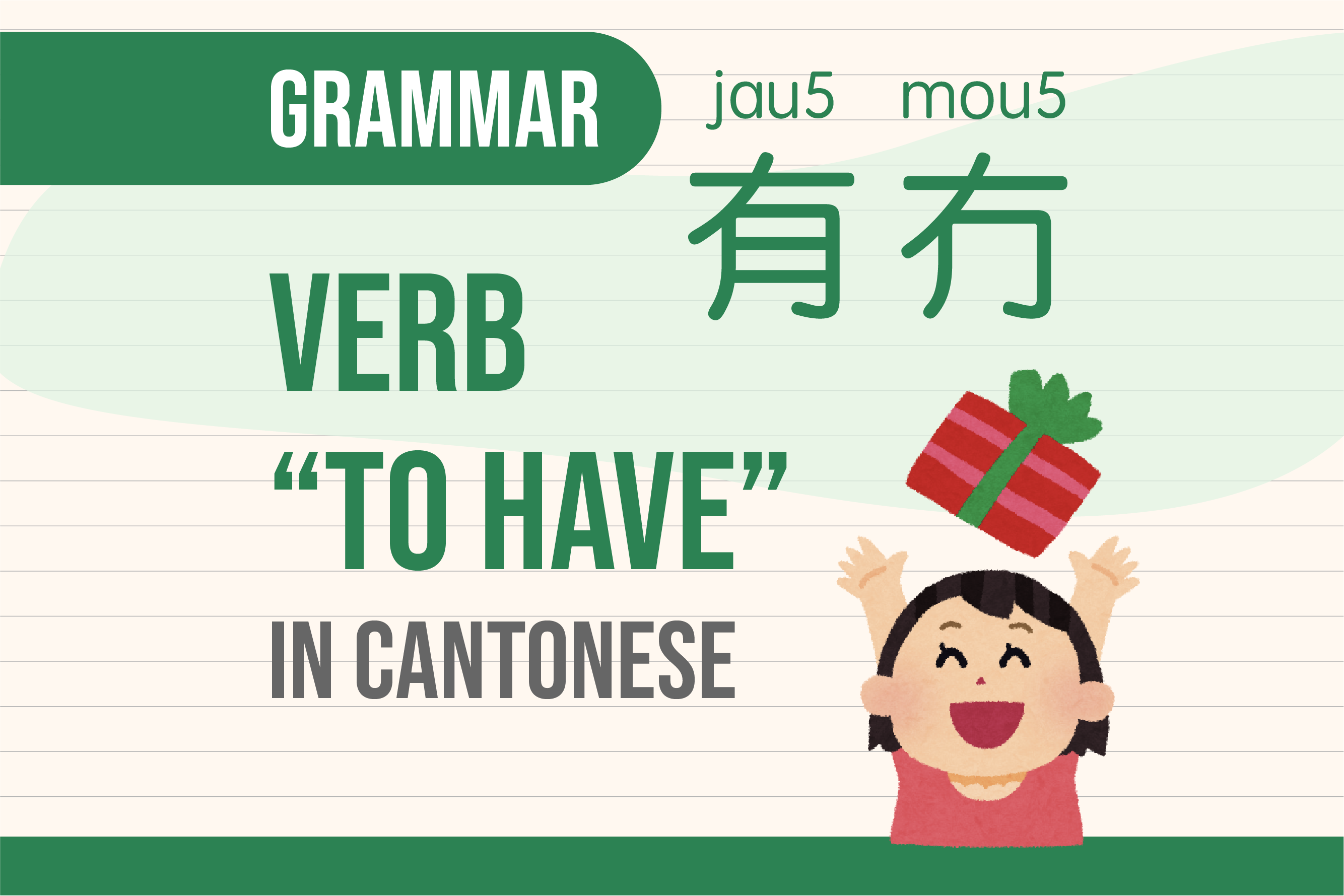Table of Content
Today, we’re going to talk about two important verbs in Cantonese: 有 and 冇. As you might have noticed, these two characters look quite similar. 冇 is just 有 without the two horizontal lines inside, and this difference is closely tied to their meanings – 有 means “to have,” while 冇 means “not to have.”
Make statement with 有 and 冇
Using 有 and 冇 is actually quite simple. The sentence structure is very similar to how we use “to have” in English:
【Subject - 有 - Object】
我有兩個仔
I have two sons.佢有一本書
He/She has a book.
【Subject - 冇 - Object】
我冇仔女
I don’t have children.佢冇錢
He/She doesn’t have money.
Pretty easy, right? However, unlike in English, where "to have" is mainly used for people and animals (animated objects), in Cantonese, inanimate objects can also use 有 and 冇 to indicate the existence or non-existence of something in a certain place. If you want to learn more about how to use 有 and 喺 to denote location and existence, you can check this out -- Cantonese Location & Existence 喺(hai2) & 有(jau5).
【Location - 有 - Noun】
嗰度有一隻雀仔
There is a bird over there.
(lit. There has a bird.)張枱上面有本書
There is a book on the table.
(lit. On the table has a book.)呢個站有三個出口
There are three exits in this station.
(lit. This station has three exits.)
One common mistake that Cantonese speakers make when learning English is using “There have/has” to express existence, which is a direct translation from Cantonese. Similarly, English speakers learning Cantonese often use “嗰度係” (There is) to express existence instead of 有. So, keep an eye on this difference!
Asking Yes-No Questions with 有冇
In Cantonese, when asking a yes-no question like “Do you have X?”, we literally ask, “You have or not have X?” This pattern is quite similar to how you ask yes-no questions with the verb "to be" 係唔係 (係 - to be | 唔係 not to be)
【Subject - 有冇 - Object?】
你有冇紙巾呀?
Do you have tissues?
(lit. You have-not have tissue?)佢有冇遮呀?
Does he/she have an umbrella?
(lit. He/She have-not have umbrella?)
Additional Notes
冇 VS 無
There is another word that sounds similar to 冇 and also means “none” or “nothing,” which is 無. They have different tones and functions. 冇 is typically used as a verb. 無 is generally used with other characters to form adjectives or nouns. For examples:
無知
ignorant無情
ruthless虛無/虛無主義
nihility/nihilism
“To have” VS 有
The word "to have" in English carries multiple meanings, such as to own something, perform an action (e.g., "to have a swim"), eat or drink (e.g., "to have lunch"), experience something (e.g., "to have a wonderful time"), or even to give birth (e.g., "to have a baby").
However, just as "to be" cannot always be translated into 係 (see additional notes in Cantonese Linking Verb 係(hai6) ), in many cases, you can't directly translate "to have" into 有 in Cantonese. In most situations, 有 is limited to meaning "to own" or to express existence.
In English, "to have" can function as an auxiliary verb, which doesn't happen in Cantonese. For example:
I have been to the UK for one week.
我去咗英國一個星期
In this sentence, the aspect marker 咗 is used to express a perfected action. In Cantonese, we rely on "aspect" to modify the action, which works somewhat similarly to tenses in English, though the concept isn't exactly the same. You can explore more about this in Cantonese Verb Perfective Marker - 咗(zo2) on Cantonese aspect and verb aspect markers.
There are also a few other meanings of 有 beyond "to own" or indicating existence, but we won't dive too deep into those here. We'll cover them in future lessons to avoid overwhelming you.
